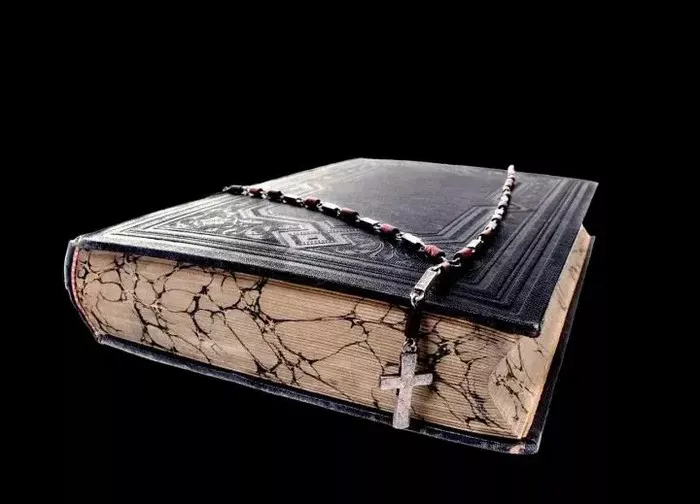Color symbolism plays a significant role in various cultures and religious texts, including the Bible. Among the spectrum of hues depicted in biblical narratives, purple stands out as a color rich in symbolic meaning. Its appearances throughout the scriptures carry layers of significance that offer insight into spiritual themes, societal values, and even historical contexts.
The Regal Symbolism of Purple
In ancient times, purple was a color associated with royalty, luxury, and prestige. The rich, deep hue was often derived from a dye extracted from the murex snail found in the Mediterranean Sea. Due to the labor-intensive process of obtaining this dye, purple garments became a mark of wealth and status, worn predominantly by kings, rulers, and high-ranking officials.
In biblical contexts, purple maintains this regal symbolism. One of the most notable instances of purple’s association with royalty is found in the New Testament, particularly in the accounts of Jesus Christ’s crucifixion. The Gospels mention soldiers dressing Jesus in a purple robe as they mockingly hailed him as the “King of the Jews” (Matthew 27:28; Mark 15:17; John 19:2, 5). This act, intended as a form of ridicule, unwittingly underscores Jesus’ divine kingship, as purple remained a symbol of royalty.
Furthermore, in the book of Revelation, purple appears in descriptions of heavenly scenes, symbolizing majesty and sovereignty. Revelation 18:16 speaks of Babylon the Great, a symbol of worldly power and corruption, adorned with purple garments and other luxurious items. This imagery contrasts with the divine authority and righteousness represented by the Lamb, whose followers are clothed in white (Revelation 19:8).
A Symbol of Wealth and Prosperity
Beyond its association with royalty, purple also signifies wealth and prosperity in biblical contexts. In the Old Testament, purple fabrics are among the luxurious materials used in the construction of the tabernacle and priestly garments. Exodus 25:4 and 26:1 describe the use of purple alongside other precious materials like gold, silver, and fine linen, emphasizing the grandeur of these sacred furnishings.
Additionally, purple is mentioned in the story of Lydia, a seller of purple fabrics from the city of Thyatira. Acts 16:14 recounts how Lydia, a worshipper of God, encountered the Apostle Paul in Philippi and was converted to Christianity. Her occupation as a purveyor of purple goods suggests her affluence and status within the community, highlighting the connection between purple and prosperity.
Symbolism of Royalty and Priesthood
Purple holds dual symbolism in biblical narratives, representing both earthly royalty and divine priesthood. In the Old Testament, purple was one of the colors used in the garments of the high priest. Exodus 28:6 describes the ephod, a garment worn by the high priest, as being made of gold, blue, purple, scarlet yarn, and fine linen—a combination symbolizing both royalty and holiness.
Moreover, purple’s association with priesthood extends to its role in the New Testament as well. In the Gospel of Luke, the parable of the rich man and Lazarus features purple prominently. The rich man, clothed in purple and fine linen, lives in luxury while ignoring the plight of Lazarus, a poor man covered in sores (Luke 16:19-31). This imagery serves as a cautionary tale about the dangers of wealth and neglecting the needs of others, highlighting the contrast between worldly riches and spiritual poverty.
Symbolism in Early Christian Traditions
In the early Christian church, purple took on additional symbolism, representing penitence, humility, and martyrdom. The use of purple vestments during Lent, a period of reflection and repentance leading up to Easter, reflects this tradition. By donning purple robes, clergy and worshippers alike symbolize their willingness to repent and undergo spiritual transformation.
Furthermore, purple became associated with martyrdom due to historical accounts of early Christians being persecuted and executed for their faith. The purple Martyr’s Crown, or coronamartirialis, was a symbol of honor bestowed upon those who died for their beliefs. This tradition underscores purple’s multifaceted symbolism within Christian theology, encompassing themes of royalty, sacrifice, and spiritual renewal.
Conclusion
The color purple holds significant symbolism in the Bible, representing themes of royalty, wealth, priesthood, and spiritual transformation. From its association with earthly kings and rulers to its role in sacred rituals and traditions, purple serves as a rich tapestry of meaning woven throughout biblical narratives. Understanding the symbolic significance of purple enhances our appreciation for the depth and complexity of biblical imagery, enriching our spiritual understanding and interpretation of scripture.
FAQs:
What are the 3 colors of God?
- White, symbolizing purity and holiness.
- Gold, representing divine majesty and glory.
- Purple, signifying royalty and sovereignty.
Why is purple associated with Christianity?
Purple is associated with Christianity due to its symbolic significance in the Bible, representing themes such as royalty, priesthood, penitence, and martyrdom. It is particularly linked to Jesus Christ’s crucifixion, where soldiers mockingly dressed him in a purple robe, inadvertently acknowledging his divine kingship.
Where is purple mentioned in the Bible?
Purple is mentioned in various parts of the Bible, including:
- Matthew 27:28, Mark 15:17, and John 19:2, 5, where soldiers dressed Jesus in a purple robe during his crucifixion.
- Exodus 25:4, 26:1, describing the use of purple in the construction of the tabernacle and priestly garments.
- Acts 16:14, mentioning Lydia, a seller of purple fabrics from Thyatira.

